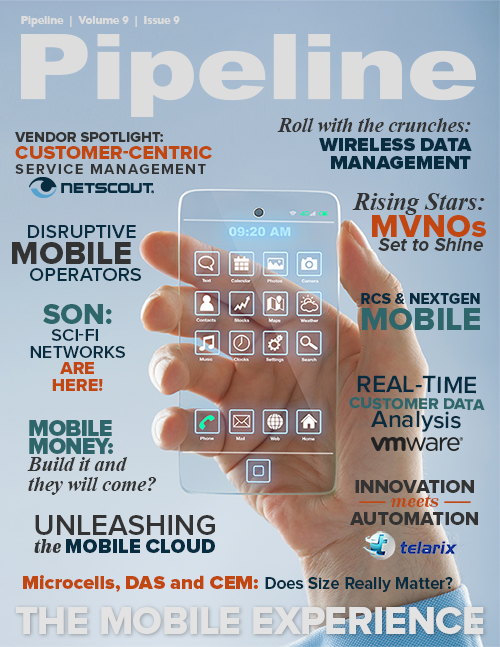SON: Sci-Fi Networks Are Here
SON is realization of an automated network constantly improving its configuration in real time.
According to Infonetics, the SON market is set to double in 2013, driven by operators looking to automate LTE rollout. AT&T, which leads the pack, recently completed a nationwide rollout of
SON; the technology is now live in 30 different markets from San Francisco to Miami. Thirteen of the initial 20 SON deployments on the network have been tested, and all 13 markets have seen
improvements of as much as 15 percent or more in call retainability, as well as a 15 percent reduction in tower overloading. Although testing isn’t complete in the seven remaining markets, all have
shown network improvement, according to AT&T.
Sales of 3G/4G SON software and 2G/3G optimization software grew 11 percent last year and are on track to grow 16 percent this year. The demand for SON continues to be fueled by the interest in
automation, not to mention operators’ desire to remove human error from the equation. Infonetics predicts that the SON and optimization software market will expand to $4.5 billion by 2016, and
that by the end of that year the 4G SON segment will have grown at a compound annual growth rate (CAGR) of nearly 87 percent since 2011.
Operators report interest in SON for three specific reasons: it reduces operating expenditures (OPEX), improves capacity and network performance, and employs small-cell technology. But for all
the hype and promise, 80 percent of the operators surveyed by Infonetics still view SON as an immature, unproven technology.
Cyril Doussau de Bazignan, director of product marketing at InfoVista, points out that Gartner claimed in its 2012 “Hype Cycle for Wireless Networking Infrastructure” report that SON has just recently passed the peak of inflated expectations.
“While some early adopters have already implemented several network optimization automation concepts, many more are having a closer look at the various SON solutions available on the market,” de
Bazignan says. “SON is new, and some operators will want to wait for the technology to become mainstream prior to adopting it — a phenomenon common for any technology life cycle. But network
optimization automation is on everyone’s agenda, and I believe that the operators that take the lead in leveraging SON capabilities will gain a significant competitive advantage, as they will be
able to offer services with a higher quality of experience (QoE) at a lower operational cost.”
At the same time, large strides are swiftly being made. Huawei, one of the biggest players in the SON market, continues to develop and test the technology; it successfully completed the world’s
first LTE SON test in 2009 with T-Mobile in Austria. In October 2011 Huawei launched SingleSON, the first multimode, multilayer SON solution, and last February it announced the commercial launch
of the Automatic Neighbor Relation (ANR), a feature of SingleSON, on an LTE network in Germany. Five months later Huawei completed the industry’s first SingleSON test on an LTE commercial network
in Hong Kong, demonstrating that throughput on the cell’s edge can be enhanced up to 30 percent to improve end-user experience.





















